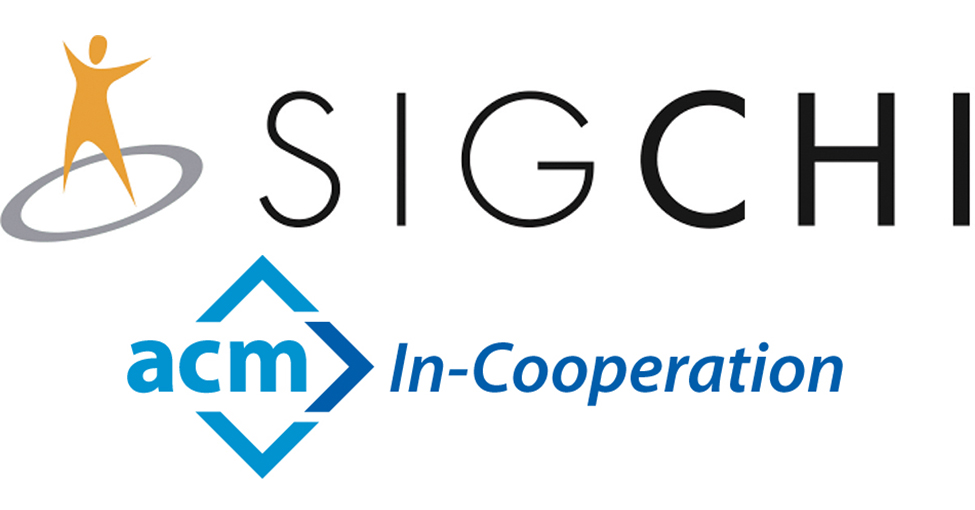
ACM SYMPOSIUM ON
COMPUTATIONAL FABRICATION
Cambridge, MA | June 17 - 19, 2018
This special meeting of the SCF, hosted by the Center for Bits & Atoms (CBA), focuses on the developments today that we predict will guide developments in this area for the next 50 years. This special meeting was inspired by the previous CBA Science of Digital Fabrication meeting. This year, SCF is will be held coincident with a special event honouring Fab Lab pioneer Mel King.
In order to provide a general framework for the diverse topics encompassed by SCF, we are organizing this year’s sessions around the following themes:
- Conception: design inception, representation, discovery process, and refinement
- Implementation: hardware and software tools and materials to realize designs
- Application: what is the real-world relevance of realized designs
- Implication: what are the broader social impacts of applied designs
Please visit last year's website: SCF 2017, for an overview of all previous keynote speakers and submissions.
Keynotes
Santanu Chaudhuri
Argonne National Laboratory
Rethinking Fabrication in a Continuum between Edge and Petascale supercomputing
Abstract: Seamless access to supercomputing and multiphysics simulation capabilities are currently restricted to researchers and engineers engaged in design, testing, and fabrication of complex machineries. As the cost of CPU cycles and access continues to fall, we need to pursue a strategy for democratizing the access to supercomputing to fabrication facilities across the world. We frame this problem as a challenge to grow HPC integration in the design and fabrication of jet engines to a paper clip. In the presentation, the connection between computing capabilities and improved design and performance of products will be explored using examples. In wide ranging problems, computers can iterate and predict new designs. In a slightly more complex case, computers can design new materials which can support a more complex design. Fab labs across the world can follow this iterative cycle of one-upmanship between materials and products design to create entirely new products. National supercomputing centers such Argonne’s leadership computing facility (ALCF) are not designed for seamless flow of problems with hierarchy of complexity between edge and petascale computing. We are advocating for change in this model. Examples from our ongoing effort in embracing this paradigm of integration of edge to petascale computing in manufacturing will be discussed.
Bio: Santanu Chaudhuri is the Director of Manufacturing Science and Engineering, Argonne’s program that develops capabilities to use high-performance computing-based mesoscale simulation tools to accelerate the development and adoption of new materials for manufacturing.
Dr. Chaudhuri earned his Ph.D. in Materials Chemistry and Chemical Physics from SUNY Stony Brook in 2003. As a graduate student, he received a NATO scholarship to work at Oxford University developing simulation methods for ionic conductors, catalysts, and battery materials. From 2003–2006, Chaudhuri worked at Brookhaven National Laboratory’s Center for Functional Nanomaterials on theory-guided design of hydrogen storage materials for automobile applications. Subsequently, he joined Washington State University, where he led the development of Applied Sciences efforts and served as an Associate Professor in the Department of Physics and Astronomy. In 2014, Chaudhuri moved to the University of Illinois at Urbana-Champaign and established the Accelerated Materials Research program as part of the Applied Research Institute.
Prior to joining Argonne, Dr. Chaudhuri served as the Associate Director of the Applied Research Institute (ARI) at the University of Illinois at Urbana-Champaign (UIUC), responsible for engineering design and simulations. His research group worked on applications of high-performance computing in energy, environment and manufacturing applications for improving efficiency of materials insertion and deployment. He maintains a joint appointment as a Professor in the Civil and Materials Engineering Department at the University of Illinois at Chicago.

Rethinking Fabrication in a Continuum between Edge and Petascale supercomputing
James Coleman
Zahner R&D
James Coleman currently acts as Lead Research and Development Engineer at A. Zahner Company, a company that specializes in computational fabrication and mass customization at an architectural scale. He is involved in the production of 100,000s of unique parts for large scale projects as a digital design and manufacturing specialist.
James holds master’s degrees in both architecture and mechanical engineering from The Massachusetts Institute of Technology. His current research is centered around parametric design-to-fabrication workflows and one-off automation strategies in both hardware and software.
He has worked internationally as a design engineer on architectural projects of a variety of scales and as a Product Development Engineer at the Ford Motor Company in Dearborn, Michigan. He currently balances working on large scale high profile architectural projects with being one half of the design studio James and the Giant Peek.
With a diverse suite of manufacturing equipment, industrial robots, and custom-made CNC machinery James makes things, breaks things, and invents things with varying levels of success and sophistication.
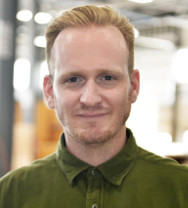
Keynote: To be announced
Erik Demaine
MIT
Fabrication through Folding
Bio: Erik Demaine is a Professor in Computer Science at the Massachusetts Institute of Technology. Demaine's research interests range throughout algorithms, from data structures for improving web searches to the geometry of understanding how proteins fold to the computational difficulty of playing games. He received a MacArthur Fellowship as a “computational geometer tackling and solving difficult problems related to folding and bending—moving readily between the theoretical and the playful, with a keen eye to revealing the former in the latter”. He appears in the origami documentaries Between the Folds and NOVA's The Origami Revolution, cowrote a book about the theory of folding (Geometric Folding Algorithms), and a book about the computational complexity of games (Games, Puzzles, and Computation). Together with his father Martin, his interests span the connections between mathematics and art, including curved-crease sculptures in the permanent collections of the Museum of Modern Art in New York, and the Renwick Gallery in the Smithsonian.
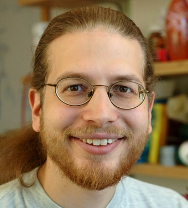
Fabrication through Folding
Shawn Douglas
UCSF
Computational tools for designing, simulating, and thinking about biomolecules
Abstract: Biopolymers such as DNA, RNA, and polypeptides are extremely powerful and versatile building materials found in all living organisms. If we can master the art of design and nanofabrication with biopolymers, we will overcome many longstanding technical challenges in materials science, computing, and medicine. To that end, our group is developing software, simulation models, and experimental methods to design, fabricate, and optimize tools and devices built from biopolymers. We are also creating nontraditional simulation tools to lower barriers to characterize, understand, and communicate about these nanoscale materials.
Bio: Shawn Douglas is interested in inventing new methods to construct and manipulate biological molecules at the nanometer scale. To learn more, visit the Douglas Lab at UCSF in the department of Cellular and Molecular Pharmacology.
You might also check out BIOMOD and cadnano.
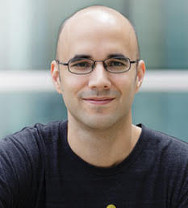
Computational tools for designing, simulating, and thinking about biomolecules
Adam W. Feinberg
Carnegie Mellon University
FRESH 3D Printing of Liquid and Soft Materials: New Applications from Regenerative Medicine to Wearable Sensing
Abstract: Over the past decade, 3D bioprinting has rapidly expanded from a niche technology and in to a versatile platform for fabricating tissues with complex geometries and features ranging from the cellular to organ length scales. Here we will discuss our recent progress in the additive manufacturing of complex structures using hydrogels and various thermoset resins that are otherwise impossible to additively manufacture using alternative approaches. These structures are built by embedding the printed material within a temporary, thermoreversible, and biocompatible support fluid. This process, termed freeform reversible embedding of suspended hydrogels (FRESH), enables additive manufacturing of hydrogels with an elastic modulus less than 500 kPa. FRESH 3D printing also enables fabrication with thermoset and composite resins such as epoxies, acrylates, and siloxanes, and can host a range of polymerization mechanisms depending on the printed material, including ionic crosslinking, enzymes, pH change, heat/light exposure, and time-sensitive gelation approaches. We will demonstrate recent advances towards a range of new applications, including 3D printing of collagen for bioengineering functional tissue constructs and of silicone elastomers for patient-specific, wearable medical devices.

Bio: Dr. Feinberg earned a BS in Materials Science and Engineering from Cornell University in 1999, followed by a Masters (2002) and Ph.D. (2004) in Biomedical Engineering from the University of Florida, where his doctoral work was focused on engineering cell-material interactions to prevent and enhance adhesion. He was then a Postdoctoral Fellow at Harvard University from 2005 to 2010, where he developed new biomaterials and cardiac tissue engineering strategies for 3-dimensional myocardial regeneration, with a focus on stem cell-based approaches. Dr. Feinberg joined CMU in the fall of 2010 as an Assistant Professor with joint appointments in Biomedical Engineering and Materials Science and Engineering.
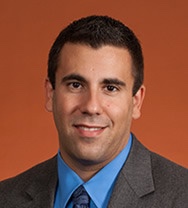
FRESH 3D Printing of Liquid and Soft Materials: New Applications from Regenerative Medicine to Wearable Sensing
John Glass
J. Craig Venter Institute
Genomes as software: An operating system for a minimal bacterial cell
Abstract: Living cells, like computers, can be seen as material implementations of Turing machines… Consider two of the signature accomplishments of the new field of synthetic biology. In building what has been called a synthetic bacterial cell and in designing and building a synthetic bacterial cell that encodes only a minimal set of genes necessary for cellular life, we have come to view living cells through the metaphor of a computer. The hardware is the membrane envelope, the protein synthesizing ribosomes, the proteins, metabolites, and the cytoplasm. The software, i.e. the operating system of the cell, is the DNA genome. The cell is capable of replicating itself. From this formalism of the Turing machine metaphor for a living cell, the question of “what are the tasks that a living cell must perform?” will be discussed to provide a somewhat utilitarian answer to the question of “what is life”?
Bio: Dr. John Glass is a Professor and leader of the JCVI Synthetic Biology and Bioenergy Group. His expertise is in molecular biology, microbial pathogenesis, RNA virology, and microbial genomics. Glass is part of the Venter Institute team that created a synthetic bacterial cell. In reaching this milestone the Venter Institute scientists developed the fundamental techniques of the new field of synthetic genomics including genome transplantation and genome assembly. Glass was also leader of the JCVI project that rapidly made synthetic influenza virus vaccine strains in collaboration with Novartis Vaccines and Diagnostics, Inc. and Synthetic Genomics, Inc. At the JCVI he has also led the bacterial outer membrane vesicle based vaccine, genome transplantation, and Mycoplasma genitalium minimal genome projects, and projects studying other mycoplasma and ureaplasma species. Glass and his Venter Institute colleagues are now using synthetic biology and synthetic genomics approaches developed at the JCVI to create cells and organelles with redesigned genomes to make microbes that can produce biofuels, pharmaceuticals, and industrially valuable molecules. Glass is an adjunct faculty member of the University of Maryland at College Park Cellular and Molecular Biology Program, and member of the Global Viral Network Scientific Leadership Board.
Prior to joining the JCVI, Glass spent five years in the Infectious Diseases Research Division of the pharmaceutical company Eli Lilly. There he directed a hepatitis C virology group and a microbial genomics group (1998-2003).
Glass earned his undergraduate (Biology) and graduate degrees (Genetics) from the University of North Carolina at Chapel Hill. His Ph.D. work was on RNA virus genetics in the laboratory of Gail Wertz. He was on the faculty and did postdoctoral fellowships in the Microbiology Department of the University of Alabama at Birmingham in polio virology with Casey Morrow and mycoplasma pathogenesis with Gail Cassell (1990-1998). On sabbatical leave in Ellson Chen’s lab at Applied Biosystems, Inc.(1995-1997) he sequenced the genome of Ureaplasma parvum and began his study of mycoplasma genomics.
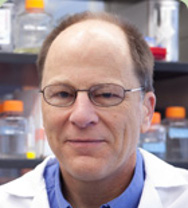
Genomes as software: An operating system for a minimal bacterial cell
Chuck Hoberman
Harvard University / Hoberman Associates
Bio: Chuck Hoberman, internationally known for his transformable structures, seamlessly fuses the disciplines of art, architecture and engineering, Through his products, patents, and structures, Hoberman demonstrates how objects can be foldable, retractable, or shape-shifting.
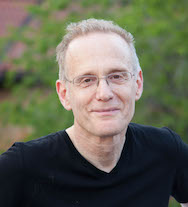
Keynote: To be announced
Caitlin Mueller
MIT
Caitlin Mueller is a researcher, designer, and educator working at the interface of architecture and structural engineering. She is currently an Assistant Professor in the Building Technology Program, where she leads the Digital Structures research group.
As a researcher, Mueller focuses on developing new computational methods and tools for synthesizing architectural and structural intentions in early-stage design. She also works in the field of digital fabrication, with a focus on linking high structural performance with new methods of architectural making. In addition to her digital work, she conducts research on the nature of collaboration between architects and engineers from a historical perspective. Mueller also aims for interdisciplinary learning and integration in her teaching efforts, which include subjects in structural design and computational methods.

Keynote: To be announced
Nadya Peek
University of Washington
Nadya Peek develops unconventional digital fabrication tools, small scale automation, networked controls, and advanced manufacturing systems. Spanning electronics, firmware, software, and mechanics, her research focuses on harnessing the precision of machines for the creativity of individuals.
Nadya is an assistant professor at the University of Washington in the Human-Centered Design and Engineering department where she directs the Machine Agency. She is VP of the Open Source Hardware Association, half of the design studio James and the Giant Peek, and plays drum machines and synths in the band Construction. She completed her PhD on "Making Machines that Make" at MIT in 2016, advised by Neil Gershenfeld. Machines and systems Nadya has built like the "Modular Machines that Make" are shared widely including at SIGGRAPH, CHI, Guggenheim Berlin, and the White House Maker Faire, and she has given keynotes at Chaos Computer Congress, SolidCon, and H.O.P.E. Nadya is an active member of the global fab lab community, making digital fabrication more accessible with better CAD/CAM tools and developing open source hardware machines and control systems.
Nadya is equally comfortable eating street food in China or gathering mushrooms in a Siberian forest, but thinks McMaster-Carr is a great reason to take up residence in the US.

Keynote: To be announced
Ryan Schmidt
gradientspace
Making Legs and Practicing Neurosurgery with Maker Software
Abstract: Computational Tools for Digital Fabrication have vastly expanded the spaces of what can be made and who can make it. While Fabrication Research tends to focus on creative and/or amateur Making, there is increasing use of "Maker Tools" by professionals for serious applications. Autodesk Meshmixer is a Maker design tool that has been downloaded over a million times by a userbase that includes aerospace engineers, dental surgeons, and fourth graders. I will describe how this software has been used to address real-world problems in digital prosthetics and neurosurgery. This usage is being driven by the growing acceptance of Additive Manufacturing (3D Printing) in many industries. I will discuss some of the current challenges in the adoption of Additive techniques, and suggest some ways in which Fabrication Research could have a significant impact in advanced manufacturing.
Bio: Ryan Schmidt is the founder of Gradientspace, a 3D software studio developing Advanced Manufacturing and VR-based design tools in Toronto, Canada. He previously led the Design & Fabrication Group at Autodesk Research, after a PhD at the University of Toronto. His 3D design/print tool Meshmixer, acquired by Autodesk in 2011, has been downloaded over 1 million times. He also works with Nia Technologies to bring 3D-printed prosthetics to the developing world.

Making Legs and Practicing Neurosurgery with Maker Software
Schedule
| Sunday, June 17 | Location: Mel King Festschrift 6th floor, MIT, Building E14, 75 Amherst St. Cambridge, MA |
|---|---|
| 12:30pm | Badge Pickup |
| 2:00pm - 2:15pm | SCF & Mel King Festchrift - Opening Remarks |
| 2:15pm - 3:15pm | Leading |
| 3:15pm-4:15pm | Living |
| 4:15pm - 4:45pm | Break |
| 4:45pm - 5:45pm | Learning |
| 5:45pm - 6:45pm | Making |
| 6:45pm - 7:00pm | Mel |
| 7:00pm | Reception |
| Monday, June 18 | Location: MIT, Building E14, 6th floor, 75 Amherst St. Cambridge, MA |
| 8:00am | Badge Pickup Opens (Coffee available) |
| 8:30am - 9:00am | Opening Remarks |
| 9:00am - 9:45am | Keynote: Chuck Hoberman |
| 9:45am - 10:00am | 5min Abstract/Vignette: "Personal Fabrication (S. Lassiter)"; "Framework for Parametric Furniture Design on the Web (A. Nambiar)" |
| 10:00am - 10:30am | Coffee Break |
| 10:30am - 11:15am | Keynote: Caitlin Mueller |
| 11:15am - 11:30am | 5min Abstract/Vignette: "Robotic Fabrication (B. Jenett)"; "Near-Constant Density Wireframe Meshes for 3D Printing (O. Untzelmann)"; "Silicone 3D Printing of Soft Mechanisms and Architectures (O. Yirmibesoglu)" |
| 11:30am - 1:00pm | Lunch |
| 1:00pm - 1:45pm | Keynote: Ryan Schmidt |
| 1:45pm - 2:00pm | 5min Abstract/Vignette: "Folded Fabrication (S. Calisch)"; "Scripted Strategies for Foldable Robotics (D. Aukes)" |
| 2:00pm - 3:00pm | 15 Minute Papers - Session 1 |
| 3:00pm - 3:30pm | Coffee Break |
| 3:30pm - 4:15pm | Keynote: Santanu Chaudhuri |
| 4:15pm - 4:30pm | Poster Previews (1 minute per poster) |
| 4:30pm - 5:30pm | Poster Session |
| 6:00pm - 9:00pm | Banquet |
| Tuesday, June 19 | Location: MIT, Building E14, 6th floor, 75 Amherst St. Cambridge, MA |
| 8:30am | Badge Pickup Opens (Coffee available) |
| 9:00am - 9:45am | Keynote: Shawn Douglas |
| 9:45am - 10:00am | 5min Abstract/Vignette: "Design Fabrication (M. Keeter)"; "Constraint Based Computational Fabrication (R. Ramesh)" |
| 10:00am - 10:30am | Coffee Break |
| 10:30am - 11:15am | Keynote: John Glass |
| 11:15am - 11:30am | 5min Abstract/Vignette: "Game Fabrication (A. Abdel-Rahman)"; "Autosaw: Robot Assisted Carpentry for Mass Customization (A. Spielberg)" |
| 11:30am - 1:00pm | Lunch |
| 1:00pm - 1:45pm | Keynote: Adam Feinberg |
| 1:45pm - 2:00pm | 5min Abstract/Vignette: "Fabricating Fabrication (J. Read)"; "Handed Shearing Auxetics (J. Lipton)" |
| 2:00pm - 3:00pm | 15 Minute Papers - Session 2 |
| 3:00pm - 3:30pm | Coffee Break |
| 3:30pm - 3:45pm | 5min Abstract/Vignette: "Assembly Fabrication (W. Langford)"; "Echidna: A Mix-domain Computational Design System (D. Merril)" |
| 3:45pm - 4:30pm | Keynote: Erik Demaine |
| 4:30pm | Closing Remarks |
Paper Sessions
Efficient Transfer Planning for Flat Knitting
Jenny Lin, James McCann and Vidya NarayananMaking Easily Foldable Nets
Yue Hao, Yun-Hyeong Kim and Jyh-Ming LienPrecision control of tensile strength in fabric for computational fabrication
Ella Moore, Michael Porter, Ioannis Karamouzas and Victor ZordanKNITIT: A Computational Tool for Design, Simulation, and Fabrication of Multiple Structured Knits
Ayelet Karmon, Yoav Sterman, Tom Shaked, Eyal Sheffer and Shoval NirExpanding & Supporting Workflows Towards Compositional 3D Printing
Jeeeun Kim, Clement Zheng, Haruki Takahashi, Mark Gross, Daniel Ashbrook and Tom YehPrototyping Non-Developable Paper Models without Gluing Tabs
Pok Yin LeungComputational Design of 3D printed objects
Tico Ballegas (HP)Other Presenters
CBA Vignettes:
Design Fabrication
Matt KeeterFabricating Fabrication
Jake ReadAssembly Fabrication
Will LangfordGame Fabrication
Amira Abdel-RahmanFolded Fabrication
Sam CalischPersonal Fabrication
Sherry LassiterRobotic Fabrication
Ben JenettEchidna: A Mix-domain Computational Design System
Devon James Merrill, Jorge Garza and Steven SwansonNear-Constant Density Wireframe Meshes for 3D Printing
Ole Untzelmann and Leif KobbeltSilicone 3D Printing of Soft Mechanisms and Architectures
Osman Dogan Yirmibesoglu, Steph Walker and Yigit MengucConstraint Based Computational Fabricationn
Rohit Ramesh and Prabal DuttaHanded Shearing Auxetics
Jeff LiptonFolded Fabrication
Dan AukesAutosaw: Robot Assisted Carpentry for Mass Customization
Andy SpielbergFramework for Parametric Furniture Design on the Web
Amit NambiarPosters:
Fabricating the Foliage Dress: Computational Design in Couture
Zjenja Doubrovski, Iris van Herpen, Drim Stokhuijzen, Petra Schuddeboom, Noor Aberle and Jouke VerlindenConstructive composing with a digitally enhanced toy train
Marieke Van Camp, Jouke Verlinden, Lukas Van Campenhout, Guido De Bruyne and Regan WattsAutosaw: Robot Assisted Carpentry for Mass Customization
Andy SpielbergBumpMarker: 3D printed marker for simultaneous tagging and weight measurement
Changyo Han and Takeshi NaemuraWatercolorWoodblock Printing
Athina Panotopoulou, Sylvain Paris and Emily WhitingAlgorithmic Quilting Pattern Generation for Pieced Quilts
Yifei Li, David Breen, James McCann and Jessica HodginsFabrication-aware design for furniture with planar pieces
Wenzhong Yan and Ankur MehtaLow-cost Force-sensing Methods for Evaluating Strength and Stability in Large-scale Unsupervised Construction
Nathan Melenbrink and Justin WerfelDigital Computation and Fabrication for Guiding Growth of Living Materials
Katia Zolotovsky, Merav Gazit, Ron Weiss and Christine OrtizOrganizers
General Chairs

Neil Gershenfeld
Center for Bits and Atoms

David I.W. Levin
University of Toronto
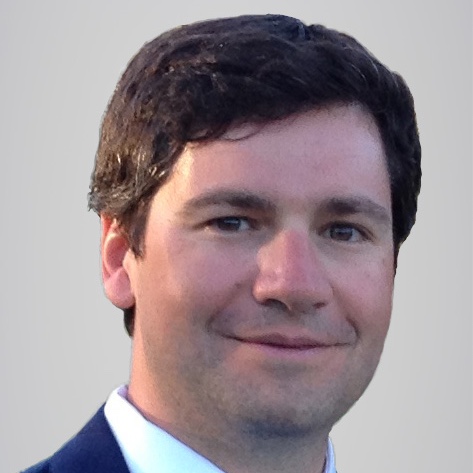
Rob MacCurdy
University of Colorado, Boulder
Steering Committee
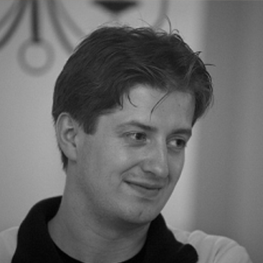
Wojciech Matusik
MIT CSAIL
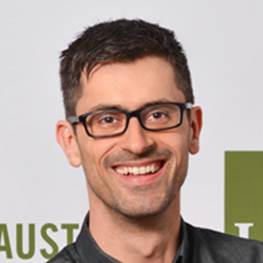
Bernd Bickel
IST Austria
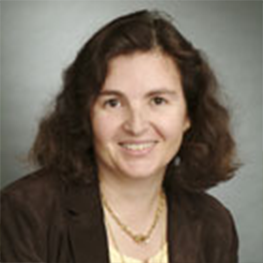
Daniela Rus
MIT CSAIL
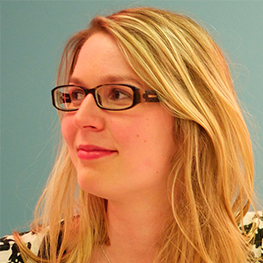
Stefanie Mueller
MIT CSAIL
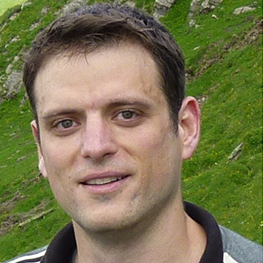
Stelian Coros
ETH Zurich
Technical Programme Chairs
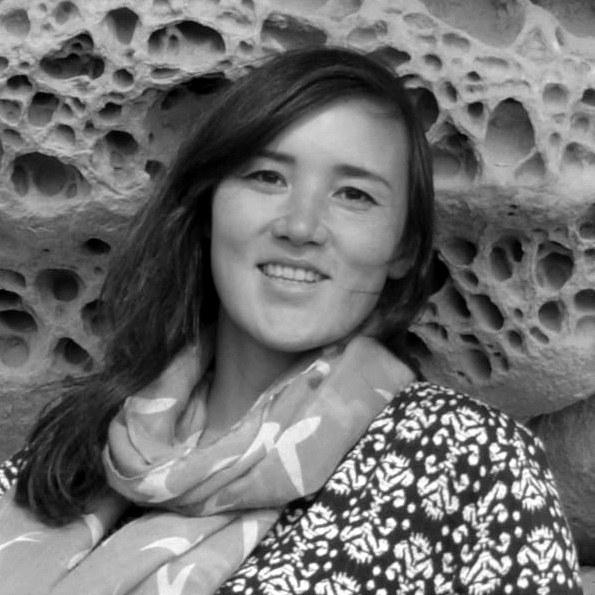
Emily Whiting
Boston University

Chris Harrison
CMU

Rob Shepherd
Cornell University

Daniel Aukes
Arizona State University

Laura Devendorf
University of Colorado, Boulder
Treasurer | Web | Local Arrangement Chairs
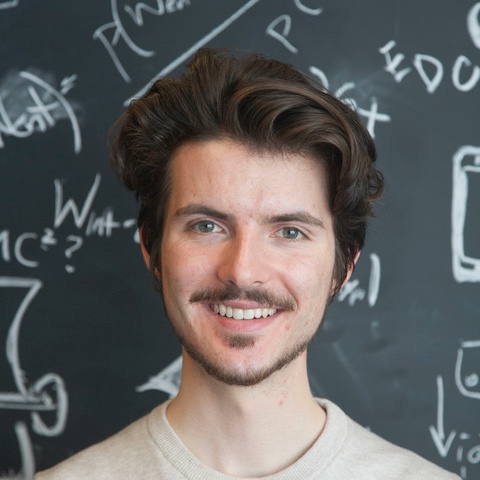
Gavin Barill
University of Toronto

Lawson Fulton
University of Toronto

Lillian Chin
MIT CSAIL
contact@symposium-on-computational-fabrication.com

